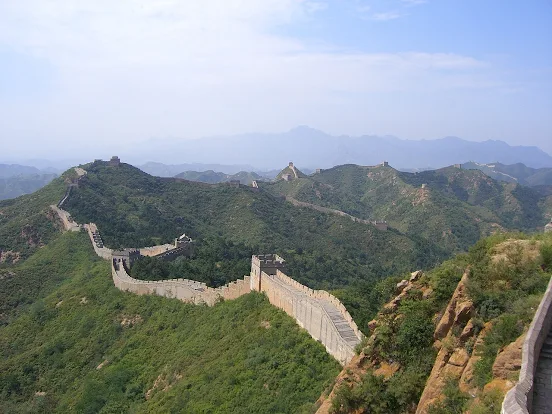The Great Wall of China
The Great Wall of China (长城) is one of the most iconic symbols of Chinese history and culture, recognized globally as a masterpiece of ancient engineering and construction. It is the longest and largest defense structure ever built, spanning over 21,000 kilometers. Construction of the Great Wall began as early as the Western Zhou period (1046–771 BCE), and it continued to evolve over more than 2,000 years, with various dynasties contributing to its expansion and fortification. The Great Wall stretches across northern and central China, traversing mountains, deserts, and plains, and was primarily designed to protect China’s northern borders from invasions and raids by nomadic tribes.
The Great Wall's construction was a monumental feat, requiring immense human labor and resources. It was not a single continuous wall but a series of walls, watchtowers, and fortifications built by different dynasties at different times. The most well-preserved sections that tourists visit today, such as those at Badaling and Mutianyu, were constructed during the Ming Dynasty (1368–1644), though earlier walls were built under the Qin Dynasty (221–206 BCE) and even the Han Dynasty (206 BCE–220 CE).
The Great Wall serves not only as a physical barrier but also as a powerful symbol of the endurance, strength, and determination of the Chinese people. The wall reflects the ancient Chinese philosophy of defense and preservation, which contrasts sharply with the concept of expansionism. It emphasizes the importance of safeguarding and maintaining the existing order, rather than seeking to conquer new territories. This idea is deeply embedded in traditional Chinese culture, where the focus is often on harmony and balance rather than aggression and conquest.
In terms of architectural and engineering marvels, the Great Wall exemplifies incredible ingenuity. It is made from a variety of materials, depending on the terrain, ranging from earth and wood to bricks and stone. Its design features include a network of watchtowers, beacon towers, and military fortresses that allowed for communication, surveillance, and quick mobilization of troops. The strategic placement of the wall and its fortifications were crucial in the defense against invading forces, with soldiers stationed in these towers to relay signals and warnings.
While the Great Wall is traditionally seen as a defensive structure, it also played a role in the cultural exchange between China and the rest of the world. Throughout history, the Silk Road trade routes passed through areas protected by the Wall, facilitating not only the exchange of goods but also the flow of ideas, technologies, and cultures between China and neighboring regions.
Badaling Great Wall (八达岭长城)
Among the many sections of the Great Wall, Badaling is one of the most famous and well-preserved. Located about 70 kilometers northwest of Beijing, Badaling is the most visited and popular section of the Great Wall. It was opened to the public in 1957 and has been extensively renovated to accommodate tourists, making it accessible while preserving much of its historical integrity. The section at Badaling offers an impressive view of the wall as it stretches across the rolling hills, giving visitors an unforgettable experience of both the historical and natural beauty of the area.
The Badaling Great Wall is renowned for its excellent preservation, including the restoration of the wall, watchtowers, and parapets. The pathway along the wall here is wide and easy to walk, making it one of the most visitor-friendly sections. The site is equipped with modern amenities, including cable cars and shuttle buses, to make access more convenient for tourists. However, despite its modernization, the site still offers a tangible sense of the grandeur and historical significance of the Great Wall. Visitors can enjoy panoramic views of the surrounding mountains, learn about the Wall's history through exhibits and guides, and capture stunning photos of this engineering marvel.
As a UNESCO World Heritage Site, the Great Wall of China continues to be one of the most popular and significant tourist destinations in China. Its cultural and historical importance is immense, representing both the strength and endurance of the Chinese people throughout centuries of tumultuous history.
Website: http://www.badaling.cn/language/en.asp
Recommended visiting time: at least half day
ZJourney:
We are excited to introduce ZJourney to China, an AI-driven self-service platform specifically designed for foreigners traveling to China. The platform will provide you with convenient travel information and services. It will be launching soon, and we invite you to leave your email address so that we can notify you when it is live and offer you a chance to try it!


